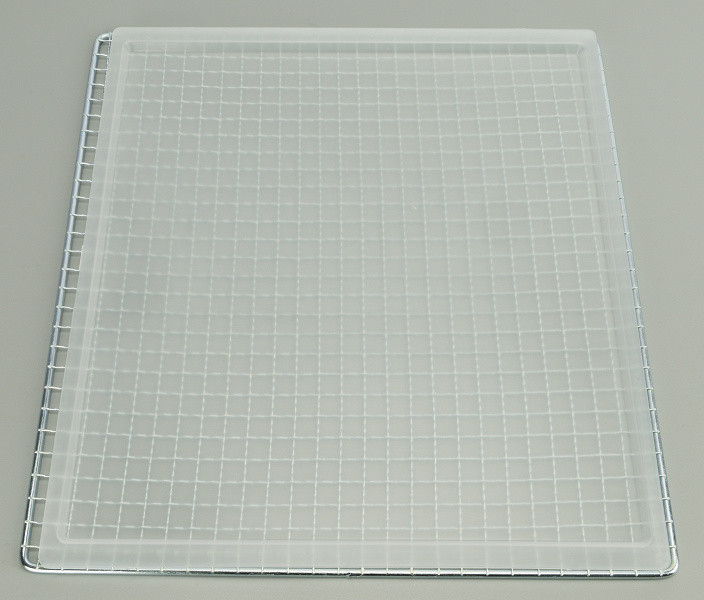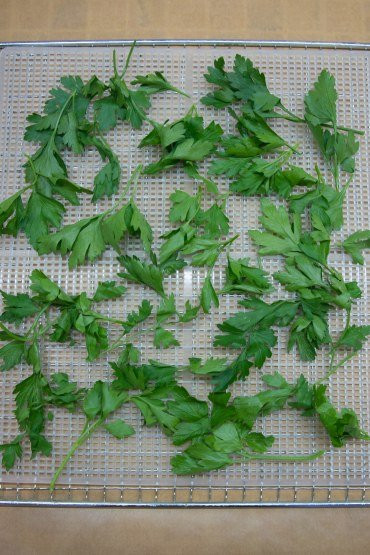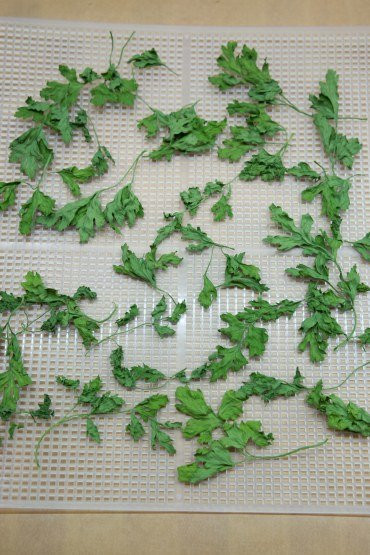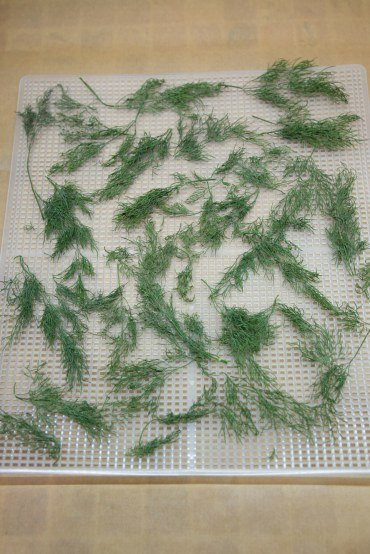The Redmond FD1105 dehydrator, also known as an electric dryer, is a roomy and lightweight device in the mid-price range. It features simple controls, six drying levels, a temperature range from 30 to 70 degrees, and a timer that can be set for up to 72 hours. We will thoroughly test its effectiveness during testing and share the results.

Characteristics
| Manufacturer | Redmond |
|---|---|
| Model | FD1105 |
| Type | Fruit and vegetable dryer (dehydrator) |
| Country of origin | China |
| Guarantee | 12 months |
| Service life* | 3 years |
| Declared power | 500 W |
| Control | sensory |
| Body material | plastic, glass |
| Number of levels | 6 |
| Equipment | 6 stainless steel shelf tiers, 6 plastic fine mesh trays, 6 flexible plastic pastille trays |
| Size of pallet levels | 30.5×33 cm |
| Height between pallets | 2.5 cm |
| Timer | 1-72 hours, 30 minute step |
| Temperature control | 30—70 °C, step 5 °C |
| Overheating protection | There is |
| Dimensions (W×H×D) | 33×34.6×45.3 cm |
| Weight in packaging | 8.5 kg |
| Net weight | 5.3 kg |
| Length of network cable | 1.3 m |
* Contrary to popular belief, this is not a period after which the device will necessarily break down. However, after this period, the manufacturer ceases to bear any responsibility for its functionality and has the right to refuse to repair it, even for a fee.
Equipment
Redmond FD1105 arrived to our test lab in a large cardboard box, designed in the brand's corporate style. The black background of the package is decorated with bright photos of the device, the full name of the model, a list of key features and technical specifications.
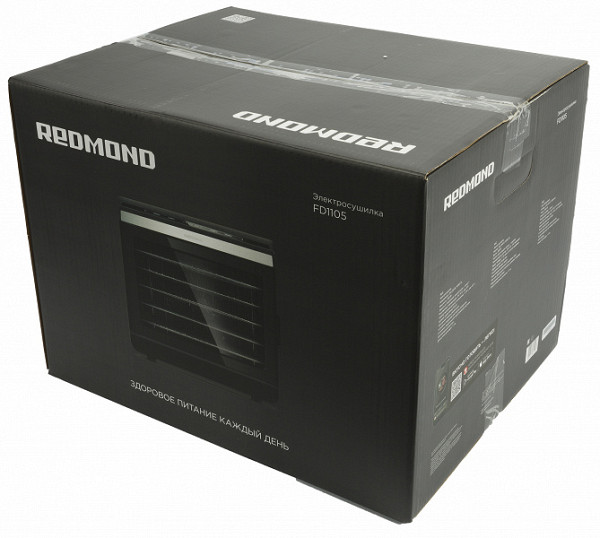
The inside of the body is wrapped in polyethylene. The components, packed in polyethylene bags, are located inside the chamber.
The dryer kit includes:
- the body itself
- 6 stainless steel tray levels
- 6 mesh plastic sheets
- 6 flexible trays for pastila
- instructions and warranty card
At first glance
The design of the dehydrator resembles a small oven. The body is made of graphite plastic, with metal inserts at the top and sides.
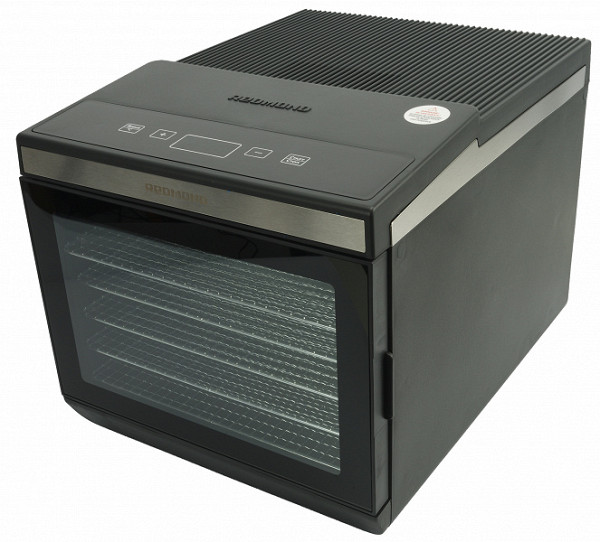
The dryer looks elegant and attractive, but a closer look at the internal plastic and its processing creates the impression of saving on materials. The plastic inside the case looks lower quality and is not processed as neatly as the outside.
Similarly, the control panel, although convenient and equipped with large sensitive sensors, has an unevenly applied paint, and internal elements are visible under the black plastic. These details are not serious defects, but slightly spoil the visual impression.
Slightly more than half of the upper part of the case is occupied by ventilation slots.
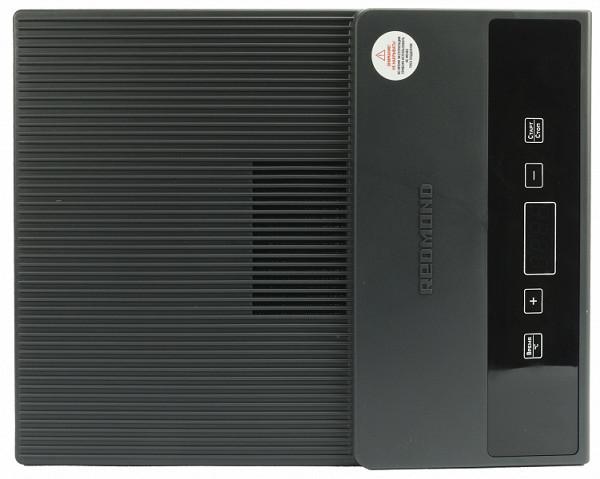
Almost the entire front part is occupied by a door with transparent glass, through which the drying process of products inside the chamber is clearly visible. However, the upper level remains partially hidden behind a strip framing the viewing window.
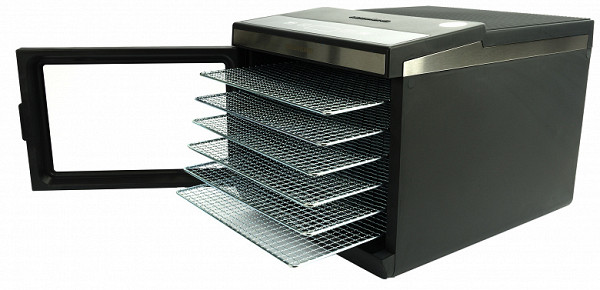
The door opens easily and smoothly due to a special protrusion at the end and closes softly, without rattling, thanks to a magnet hidden in the door frame. When slightly open, it is securely fixed.
Without trays, the dehydrator body weighs about 5 kg and stands firmly on the surface, without moving when the door is opened. In addition, strong adhesion to the tabletop is provided by four rubberized feet.
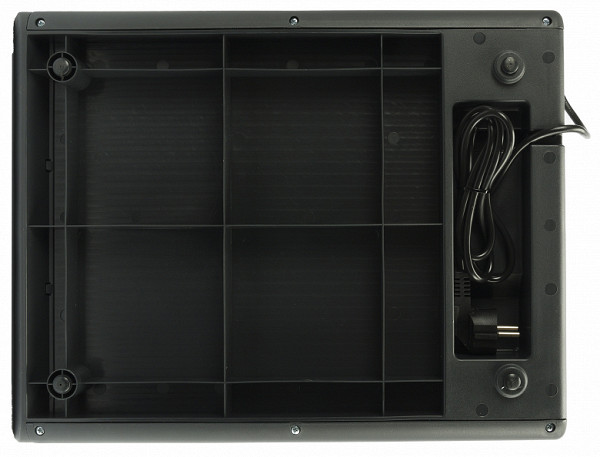
The back wall of the device is made of metal and is equipped with ventilation slots, as well as a compartment for storing the cord. The cable length is 1.3 m, which limits the placement of the dryer at a distance from the socket.
The device takes up relatively little space: its width is 33 cm, the height is 35 cm. It is important to provide sufficient space above the device for ventilation. The depth of the case is almost 46 cm, plus you need to leave about 15 cm more for the removal of hot air.
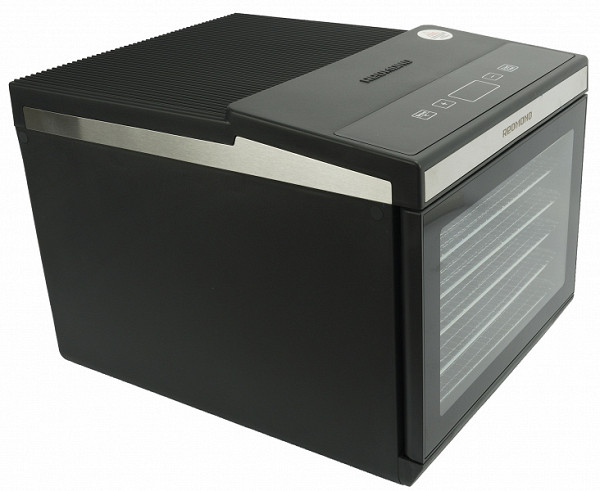
Horizontal convection airflow of the chamber is provided by a fan located on the rear wall of the chamber behind the grille. There is no lighting in the chamber.
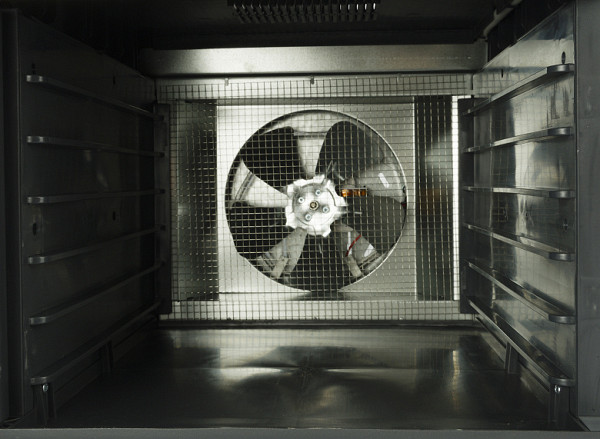
Along the walls of the chamber there are guides for installing tray grates. There are six levels in total.
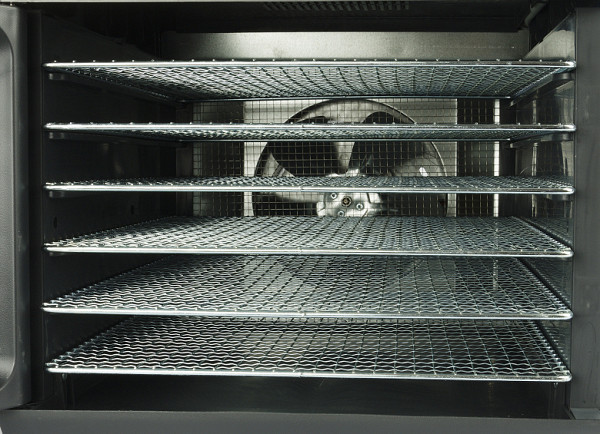
The distance between the trays is 2.5 cm. To dry larger products, you can remove some of the grates, but for the device to work correctly, you must use at least three trays.
The dryer comes with 6 metal grates. The mesh and frame of the accessories are durable and do not deform under pressure, but their surface is noticeably rough.

The metal tray measuring 30.5 x 33 cm serves as the main element for laying out products. If necessary, you can place plastic trays with sides or fine-mesh sheets on it. The set includes 6 pieces of both.
Instructions
The user manual is made in the form of a 19-page brochure. It is printed on high-quality glossy paper and designed in the company's corporate style. The document contains all the necessary information about the device in two languages: Russian and Kazakh.
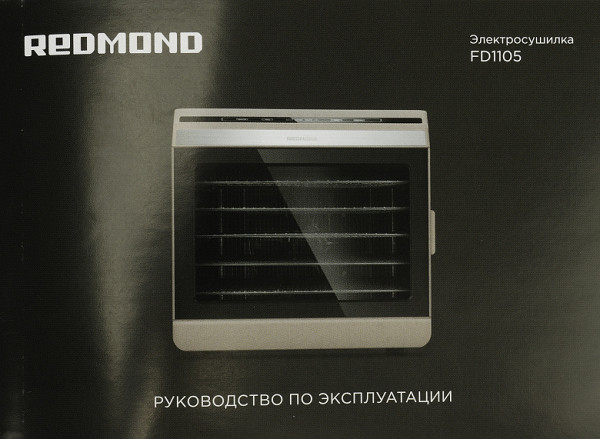
The text contains detailed information about the device, recommendations for choosing temperature settings for drying various products, a description of the controls, as well as tips for safe operation and maintenance.
Control
The Redmond FD1105 is easy and intuitive to operate. All functions are available without the need to refer to the instructions, the sensors are easy to press and respond quickly.
To turn on the device, press the Start/Stop button. The dryer immediately sets the default parameters: 35°C for 8 hours, and starts the heating process.
The "+" and "-" buttons are used to change the parameters. The time can be set from 1 to 72 hours in 30-minute increments, and the temperature from 30 to 75°C in 5°C increments. To change the values faster, you can hold down the "+" or "-" button. The changes are saved automatically when you stop pressing the buttons.
During operation, the display shows a countdown. To check the current temperature, press the Time/°C button. The parameters can be changed at any time.
At the end of the cycle, a beep sounds and the heating switches off. Although the maximum continuous operating time is not specified in the documentation, the timer allows you to set the device to operate for up to 72 hours. In the event of a power failure, the settings are reset, and when the power is restored, the device does not turn on automatically.
Operation
When first starting, as stated in the instructions, it is recommended to warm up the device with an empty chamber at maximum temperature for 30 minutes. In the first five minutes, a slight technical smell was noticed, which soon disappeared. After that, we wiped the inner chamber and the door with a soft damp cloth, and washed and dried all the trays.
When choosing a place for installation, it is important to consider the necessary free space around the body for ventilation and to ensure that the surface on which the device stands is solid and level.
Redmond FD1105 turned out to be simple and easy to use. The main convenience is that after loading the prepared products into the chamber, the user does not have to worry about the drying process. The device operates autonomously, allowing you to do other things without being distracted by checks.
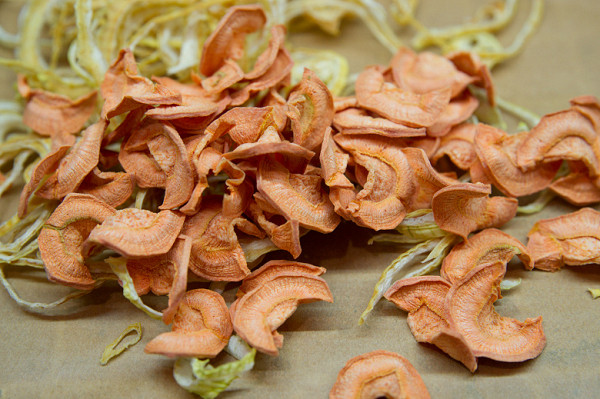
There is no need to rearrange the trays or mix their contents. The dryer operates stably and predictably, providing uniform heating both at all levels and over the entire surface of each tray.

During testing, we found that one tray can hold approximately:
- 220 g apples, sliced
- 240 g lemons, sliced
- 190 g onions, sliced
- 350 g fruit and berry puree for pastila
These values may vary depending on the thickness of the slices and the distance between the pieces. We tried to slice thinly and lay the products tightly, in one layer.
Care
Maintenance of the dehydrator includes regular cleaning of the trays and the inner chamber. The trays can be washed by hand under the tap or in the dishwasher, and it is recommended to wipe the inner chamber with a soft cloth or sponge soaked in a solution with a neutral detergent. A damp cloth is suitable for the outer part of the body. The use of abrasive materials and aggressive chemicals is prohibited.
Our measurements
The maximum power recorded with a wattmeter was 696 W.
Power consumption for 12 hours of operation at a temperature of 40 °C reached 2.680 kWh, and for 8 hours at 60 °C — 3.769 kWh.
In addition, we measured the actual temperature in some modes 10 minutes after starting the device.
| Set temperature | Actual temperature |
|---|---|
| 30 °C | 25—28 °C |
| 40 °C | 45—47 °C |
| 50 °C | 53—55 °C |
| 70 °C | 60—66 °C |
During long-term drying at maximum temperature, the side walls of the case heat up to 40 °C, and the upper part and the door glass — up to 46-50 °C.
The noise level during operation of the device is moderate, but if you are nearby, you can hear a light tapping, probably from the fan blades.
The sound signal when pressing buttons and the end of the cycle is also quiet, but it cannot be turned off.
Practice tests
Apples, pears and apricots
For the first test, we sliced apples and pears into thin wedges and halved small apricots. The dehydrator was run at 60°C for exactly 8 hours.
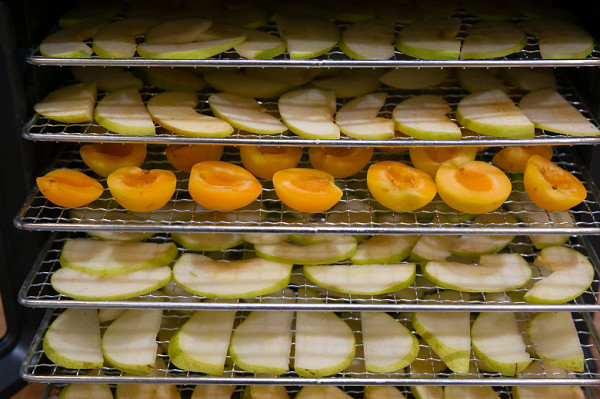
From 220 g of fresh apple slices placed on one level, we got about 35 g of dried apples. Thus, in one cycle, approximately 1320 g of product can be loaded into the dryer, obtaining about 200 g of finished dried fruit at the output.
The uniformity of drying can be assessed from the photos below. From left to right: 1st, 4th and 6th levels from the top.
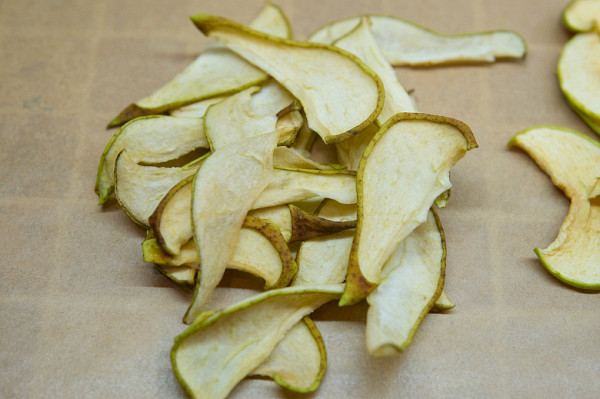
8 hours was enough for the apples and pears, they dried perfectly and remained flexible, but the apricots needed another hour at 70°C to reach the dried state.

Result: excellent
Lemons
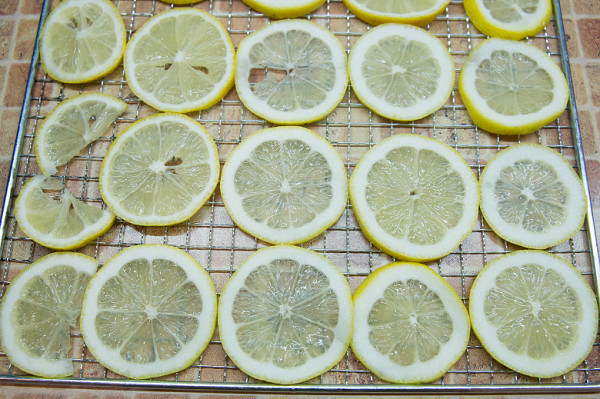
Lemons, cut into thin rings, were dried at 70°C for 8 hours.

As in the previous test, there was no need to check, interfere with the process or rearrange the levels.
Result: excellent
Carrots and onions
Three levels contained approximately 600 g of carrots in thin slices, and two more levels contained half rings of onions weighing about 400 g in total.


Drying at 60°C lasted 9 hours. At the end of the cycle, crispy and aromatic vegetables awaited us.

Result: excellent
Pastila and mango
The plastic trays for the pastila, as recommended in the manual, were lightly greased with vegetable oil. On one tray, the banana-strawberry mixture was placed.
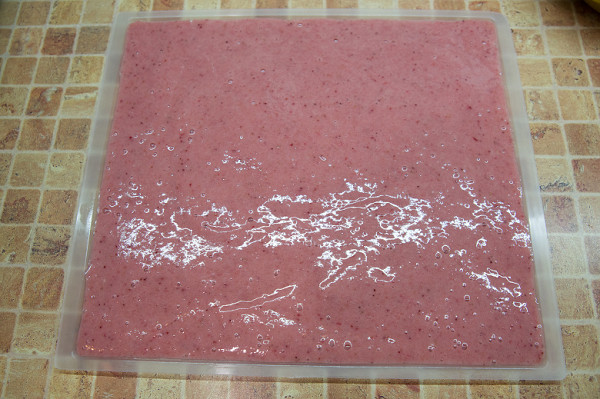
Two more trays were filled with banana and peach puree. To avoid sourness, a couple of tablespoons of sugar were added.

A couple of layers of coarsely sliced mango were sent into the chamber along with the marshmallow trays. We deliberately did not make them too thin to preserve the dried top and soft core.
Initially, we set 8 hours at a maximum temperature of 70 °C, but at the end of the cycle it turned out that this time was not enough, so we added another 2 hours. In the end, the result was perfect.
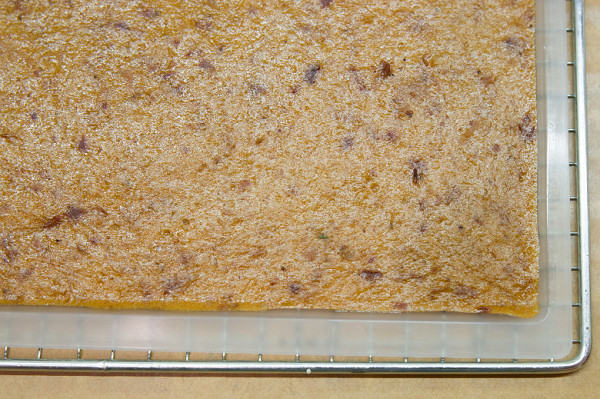
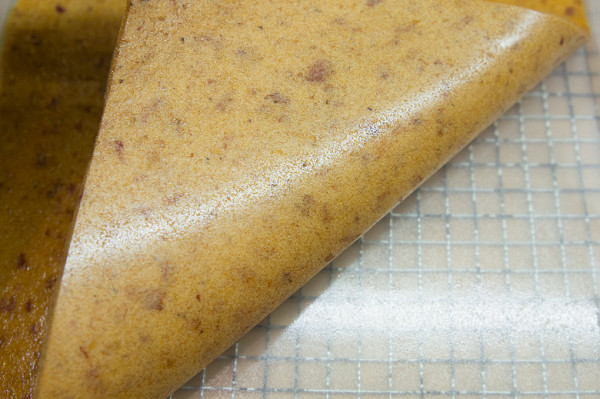
The pastila easily peeled off the trays and did not crack or break during the peeling process.

The mango slices came out exactly as we wanted.
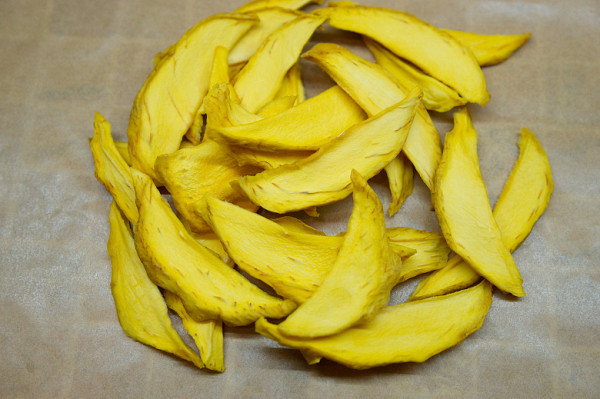
Result: excellent
Green

For this test, we used dill and parsley, after separating the sprigs from the main stem. The photo below shows the capacity of the mesh trays when loosely packed — 25 g each. More can be placed if necessary.
To avoid overdrying the greens, we used gentle air heating — 40°C. The greens reached a completely dry state in 12 hours.
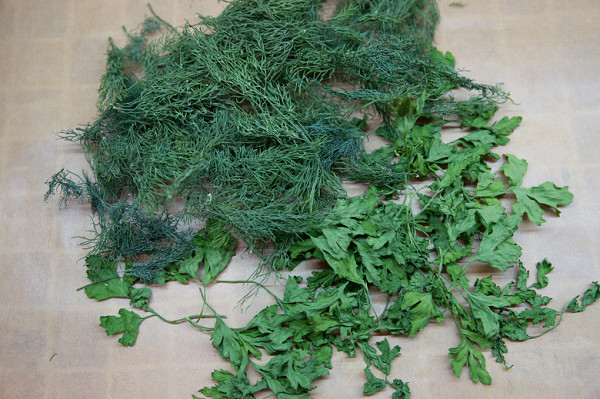
Result: excellent
Conclusions
The Redmond FD1105 dehydrator showed good results during testing. Among the main advantages, it is worth noting uniform drying both on all levels and on the entire surface of each tray. Although the drying speed is not the highest compared to similar models of the same power, the device is quite consistent with average indicators.
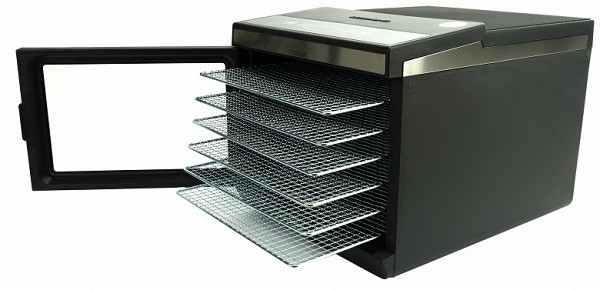
The dryer control is intuitive and clear from the first minutes of use. Convenience in operation is provided by the ability to change the parameters directly during drying and the low noise level of the device. Among the advantages, it is also worth noting a large number of trays suitable for different types of products.
Pros:
- timer up to 72 hours with a step of 30 minutes
- temperature adjustment in the range from 30 to 70 °C with a step of 5 °C
- absolutely uniform drying at all levels and on the plane of each tray separately
- moderate noise and heating of the body
- large set of trays of three types
Cons:
- non-switchable sound signals

